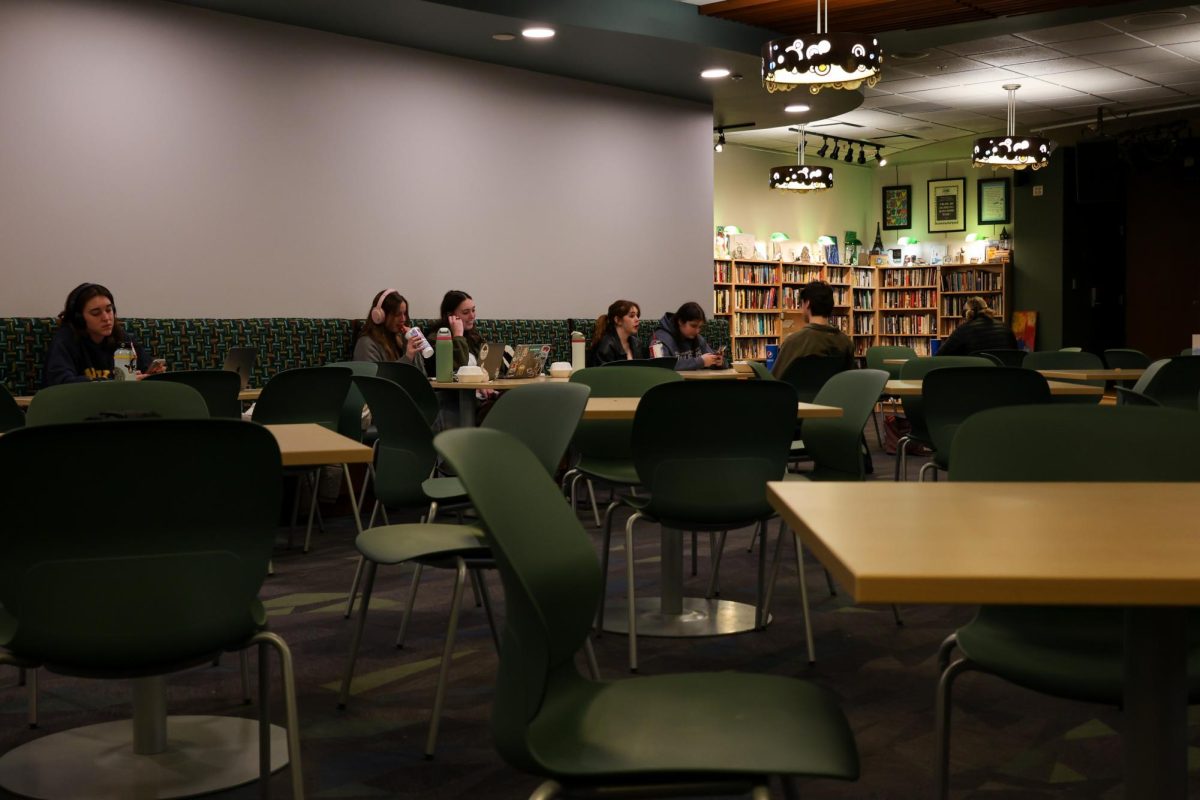For 25 years the Larocques, a close-knit family in Vermont’s Northeast Kingdom, have been the focus of a group of UVM medical researchers trying to unravel the mysteries of a rare genetic disorder, protein C deficiency, that affects people worldwide. The condition has an incidence of one in 200 in the general population, but nearly one in four Larocque family members carry it. Among other problems, it can cause thrombosis — clots that form in the deep veins of the leg — which in turn can lead to deadly pulmonary embolisms.
As the UVM study has evolved, it has extended beyond the characterization of a new-to-science clotting disorder to include biochemical, psychological, clinical and genetic components. UVM researchers typically set up in regional medical facilities or visit family members in their homes. Family members give blood samples, answer health questionnaires, and undergo ultrasound imaging of their leg veins.
Back in the lab, the data collected in some of the state’s most bucolic settings is studied with the most advanced techniques available. The study is one of the largest and longest running of its kind and has come of age along with the science of molecular biology. Blood samples from family members are analyzed using the latest gene-mapping technologies and statistical approaches, some originally developed for the Human Genome Project.
“There’s no doubt this family has helped prevent thrombotic events in others who suffer from the condition,” says Dr. Ted Bovill, professor and chair of pathology and the study’s principal investigator.
Start of the search
The effort began in 1977 when Dr. Joe Dickerman, professor of pediatrics, examined a boy with swelling in his calves. He suspected thrombosis, and began sketching a preliminary family tree.
The boy was clot-free, but Dickerman remained intrigued by the family. In 1977 the only known genetic risk factor for thrombosis was anti-thrombin III condition. Working with a resident, he tested 50 family members and found their anti-thrombin levels were normal. Dickerman realized that he was closing in on a new genetic risk factor for the disease.
The work stalled for a time, but outside researchers began to close in on characterizing protein C deficiency. In 1985, a call from one of them connected the UVM bloodwork on the Larocques with a genetic disorder beginning to draw increasing attention from researchers.
One of the first jobs of the study was to assemble a highly detailed family tree or pedigree. Peter Callas, assistant professor of pathology, who became and has remained the primary contact with family members, coordinated the work in the United States. This resulted, in 1989, in the first of many publications dealing with the family. Subsequently, an international team developed the family pedigree. Then genotypes for marked regions of the genome around the protein C gene were taken for 117 relatives from France, Quebec and Vermont. Applying statistical probabilities to all potential genetic pathways, three Quebec researchers were able to trace the specific protein C mutation back through 400 years. The trait originated with a distant uncle who emigrated from France to Quebec with his wife in 1669.
“We now know that the husband or the wife in this immigrant couple was most likely the originator of what has become a classic study of a genetic founder-effect in disease,” Callas says.
A crucial protein
Thanks to the thrombosis study, more is now known about protein C and its role in clotting. Protein C was first cloned in 1982 by George Long, now a professor of biochemistry, when he was working for Eli Lilly & Company. Long was interested in the fundamental causes of thrombosis and sought to unravel the structure of the protein. “We needed to characterize the gene to understand the protein,” he says. Using the early tools of recombinant DNA technology, Long sequenced the gene and characterized the mutation itself. He won the “Inventor of the Year” award from the Intellectual Property Owners Association in 2002 for his work, which contributed to Xigris, a medication used to treat a serious blood infection called sepsis. Protein C may eventually become a basis for treatment of other circulatory diseases.
“What makes protein C deficiency especially interesting to geneticists,” says Bovill, “is that the clinical expression of protein C deficiency is so variable. Many protein C deficient family members, in fact a majority of them, all of whom are carrying the same mutant allele, never show any symptoms of thrombosis.”
This anomaly sent researchers on a search deep into highly sophisticated molecular genetics studies, looking for multigenic interactions with protein C deficiency. Having ruled out many interactions, the UVM team, in collaboration with researchers at the University of Utah, is now looking for one or two unknown mutant genes that, together with protein C deficiency, results in thrombotic occurrences.
“One of the benefits of the thrombosis study and this wonderful family,” Long says, “is that it will help medical science improve its understanding of far more common multigenic diseases like diabetes, arteriosclerosis and hypertension — extremely complex tasks because of the multiple genetic and environmental interactions that come into play to bring about the expression of these conditions.”
Genetic hunt
The genetic research aspects of the thrombosis study, funded in part by a five-year, $1.35 million National Institutes of Health grant, are at the leading edge of human genetic research. Using gene markers, researchers can look for relationships within the DNA of family members who have both protein C deficiency and thrombotic symptoms. The work calls for accurate clinical descriptions in the field, sophisticated molecular genetics analysis and intricate statistical analysis in the lab.
So far the search has been narrowed from the 30,000 to 60,000 genes in the human genome to 50 to 100 genes, many of whose function is still unknown. Bovill uses the analogy of searching through the San Francisco phone book to describe this aspect of the study. “We’re going from the whole book to the C’s and eventually down to a single, or several, street addresses.”
Bovill says getting to that point, which will lead to better understanding of how to treat a condition as common as stroke, will depend on clinical data collected in field trips to examine family members in the Northeast Kingdom and Quebec. In the end, a quarter century of important scientific inquiry becomes a common effort, a family affair.
















